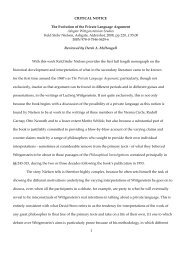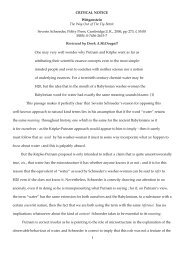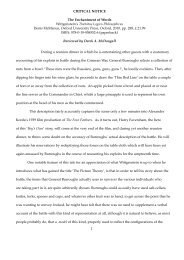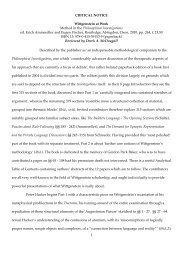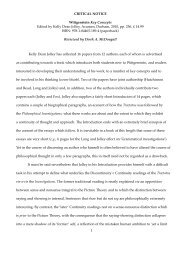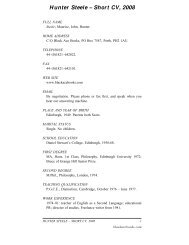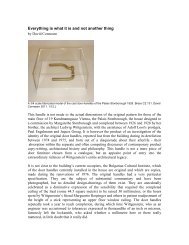Wittgenstein's Philosophical Investigations A Critical Guide
Wittgenstein's Philosophical Investigations A Critical Guide
Wittgenstein's Philosophical Investigations A Critical Guide
Create successful ePaper yourself
Turn your PDF publications into a flip-book with our unique Google optimized e-Paper software.
Wittgenstein’s thinking on this question, he has occasion to disagree with a 2002 paper of Heather Gert<br />
(Ibid., 50 Footnote 1), who has recently repeated her claim that the standard metre is one metre long,<br />
in a new paper in the 2010 Jolley collection (Wittgenstein Key Concepts, Acumen). Jacquette begins by<br />
making a fairly common assumption about one practical role performed by the standard metre bar:<br />
When questions arise as to whether a linear measurement is correct,<br />
the matter can in principle be settled by appeal to the Paris metre bar,<br />
which has been chosen as setting the standard. The problems that should<br />
continue to haunt us are: (1) how the standard metre bar can possibly<br />
decide questions about whether or not anything is exactly one metre in<br />
length if it is not itself exactly one metre in length; (2) how the logical<br />
consistency problem can be overcome without substituting predicate<br />
complementation for Wittgenstein’s negation (‘not’ ‘nicht’); and (3)<br />
whether the language-game role played by the standard metre bar can<br />
be properly understood without exempting it from itself either being<br />
or not being precisely one metre long (Ibid., 50 et seq.).<br />
It may be thought that his first question pretty much answers itself because - as Jacquette<br />
will come to show - the condition under which the standard metre bar as a means of representation<br />
can after all be used to measure other things is precisely that it cannot be used to measure itself. The<br />
second question arises because Jacquette has already suggested that Wittgenstein’s statement about<br />
the standard metre bar, is a way of drawing our attention to a Rylean category-mistake along the<br />
lines of asking to be shown the college after having been taken on a tour of all its buildings and<br />
grounds. Yet he has decided that it is rather more than this because Wittgenstein is really referring<br />
to the clear inapplicability of predicating length to the bar. Yet there is no genuine reason not to<br />
conclude that this is a category mistake of a special kind, in which case it may appear that Jacquette<br />
is making rather heavy weather of Wittgenstein’s text in raising a logical consistency problem at all.<br />
It may also be thought that the answer to the third question automatically follows from the answer<br />
12



